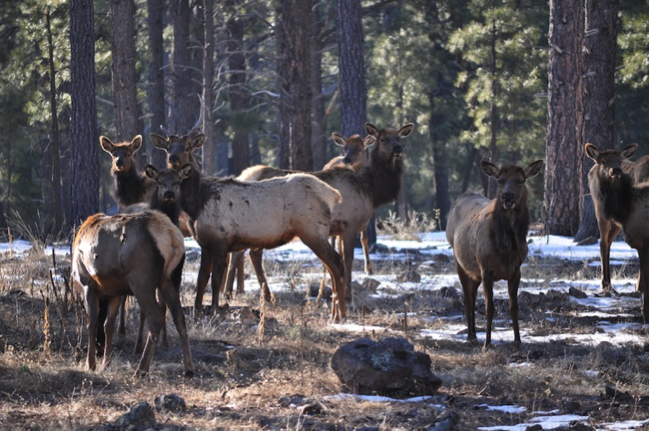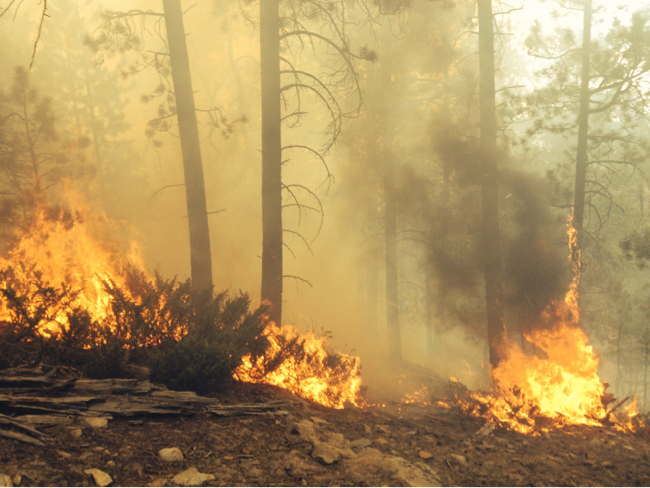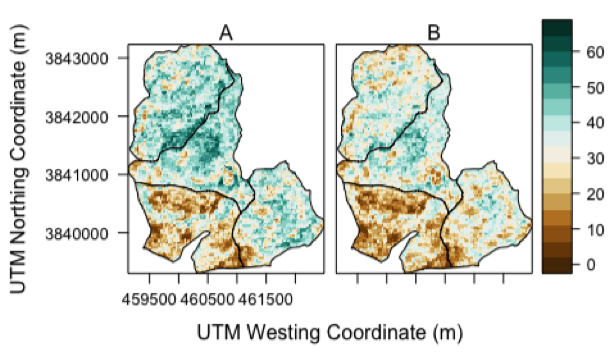Blink and you might miss the elk herds that follow the flashy phenology of spring forage above Arizona’s Mogollon Rim, en route to less harsh wintering grounds below. They’ll leave evidence of their passing with shed antlers or well-worn paths, elusive and exciting to come across.

This year I came across their paths incidentally while scanning high-resolution imagery of the Coconino National Forest. Elk tracks crossed themselves over a penetrable snow layer, stitching together ponderosa forest and open forested grassland.
The U.S. Forest Service implemented prescribed fire in this particular area in 2015, as part of the Upper Beaver Creek (UBC) Forest Health Project. The treatment was intended to reduce dense fuel accumulations and encourage growth of a diversity of grasses, shrubs, and wildflowers.

Prescribed fire treatment.
It was towards this goal that the non-profit Conservation Science Partners played a role and I was analyzing high-resolution imagery, looking for evidence of a restored landscape. Here is what we found:
Where canopy was less of an obstruction within the UBC project area, we were able to show that there was a post-fire flush of herbaceous fuels. This area had the lowest initial canopy cover and so grasses and forbs likely benefited from a post-fire nutrient flush and reduced competition from large trees. An increase in herbaceous fine fuels and decrease in canopy cover would be expected to increase the potential for surface fires, which are an important characteristic of healthy forest dynamics.
Relying only on a remote sensing-based approach and only two dates of high-resolution imagery (2014 and 2016; pre- and post-treatment), we showed a measureable reduction of 15% in canopy cover as a result of fuels reduction treatments.

Maps of the A) pre-treatment (2014) canopy cover (%) and B) post- treatment (2016) canopy cover (%), in each of four prescribed-burn treatment blocks across the UBC project area.
Canopy cover is a key indicator of potential fire behavior and a common metric for measuring success of fuels treatments. In addition to reducing canopy cover, treatments also reduced canopy bulk density and increased the height to live crown.
As a result of fuels reduction, fire behavior modeling showed that there was a 27% reduction in potential fire intensity, and potential for active crown fire decreased by 10% over the project area.
In a recent NFF blog post, Vance Russel writes in defense of the monitoring phase of projects. He points out that ‘in the conservation world, we do sometimes conduct business without checking the books.’
In this context, the UBC Forest Health Project is important because it incorporates the monitoring phase into project funding. As a result, it’s possible to report back to a wide audience, including donors, the scientific community, and conservation advocates – all of whom have a stake in conservation work.
Click here to learn more about the work of the Northern Arizona Forest Fund.

